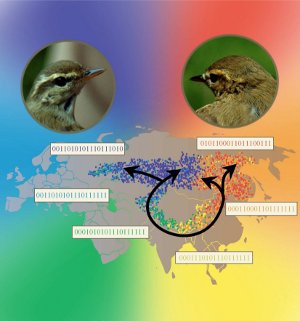 Ayana B. Martins, M.A.M. de Aguiar and Y. Bar-Yam,
Ayana B. Martins, M.A.M. de Aguiar and Y. Bar-Yam,
PNAS (2013) online version DOI 10.1073/pnas.1217034110.
Neutral models, in which genetic change arises through random variation without fitness differences, have proven remarkably successful in describing observed patterns of biodiversity, despite the manifest role of selection in evolution. Here we investigate the effect of barriers on biodiversity by simulating the expansion of a population around a barrier to form a ring species, in which the two ends of the population are reproductively isolated despite ongoing gene flow around the ring. We compare the spatial and genetic properties of a neutral agent-based population model to the greenish warblers complex, a well-documented example of an actual ring species in nature. Our results match the distribution of subspecies, the principal components of genetic diversity, and the linear spatial-genetic correlation of the observed data, even though selection is expected to be important for traits of this species. We find that ring species are often unstable to speciation or mixing but can persist for extended times depending on species and landscape features. For the greenish warblers, our analysis implies that the expanded area near the point of secondary contact is important for extending the duration of the ring, and thus, for the opportunity to observe this ring species. Nevertheless it also suggests the ring will break up into multiple species in 10,000 to 50,000 y. These results imply that simulations can be used to accurately describe empirical data for complex spatial genetic traits of an individual species.
Or send an email for a copy: aguiar@ifi.unicamp.br


